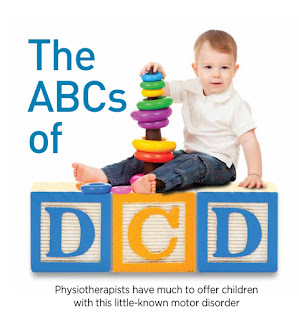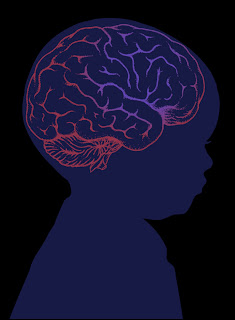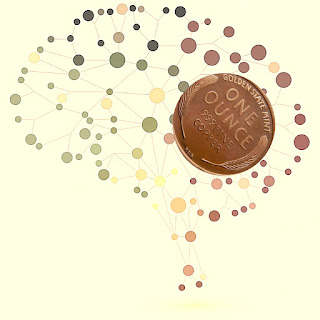A TALE OF DIMINISHED REFLEXES : NEONATAL HYPOTONIA EXPLAINED (PART I) !!!!!! BY DR. VANDANA PATEL (PT)
Tone is defined as a resistance to the muscle to passive elongation or stretch. It represents the degree of residual contraction in normally innervated, resting muscle, or steady-state contraction.
Tonal abnormalities can be:
1. Hypertonia (Increased tone above normal resting level) SPASTICITY
2. Hypotonia (Decreased below normal resting level)
3. Dystonia (Impaired or disordered tonicity) DYSTONIA
HYPOTONIA:
It is a decrease in muscle tone. Hypotonia is decrease in the normal resistance offered by muscle to passive elongation and is usually associated with a reduction in the amplitude of deep tendon reflexes. It is believed to be related to the disruption of afferent input from stretch receptors and/or lack of the cerebellum’s facilitatory efferent influence on the fusimotor system.
Hypotonia appears to influence the control of voluntary movements. It is associated with decreased postural control, difficulty initiating movements, weakness, decreased endurance, and decreased coordination. Movements of the extremities and trunk that require sustained holding against gravity are most affected. Hypotonia is often associated with an inability to stop a rapidly moving limb, resulting in an overshoot, followed by excessive rebound in the opposite direction. Hypotonia in the muscles of speech promotes abnormalities in pitch and loudness, and in oculo-motor muscles results in difficulty in maintaining the gaze. Failure to check movement is closely related phenomenon.
NEUROPHYSIOLOGY OF HYPOTONIA:
Hypotonia is caused due to the defects in extrapyramidal part of Central nervous system. The excitatory influence exerted by the extrapyramidal system upon the moto-neuron pools is diminished and, as a result, the muscles show a reduction in sensitivity to stretch. The muscle appears to be total flail. The muscles have a normal lower motor neuron supply but the factors exerting an influence upon the moto-neuron pools are seriously disturbed. There is a reduction of excitatory influence upon the small anterior horn cells which give rise to the fusimotor fibers. Because of this fusimotor fibers are inactive and therefore activity of the intra-fusal muscle fibers is diminished.
Under normal circumstances, the deep cerebellar nuclei send 'reinforcing' signals to the motor cortex and brain stem motor nuclei. This is via the cerebello-cortical tract, and serves to increase the tone. Thus, if the deep nuclei are lost for any reason, there is an initial slight decrease in tone.
Totally flaccid muscles have no lower motor neuron supply because of damage or injury to all the cells in their moto-neuron pools or to all the fibers passing peripherally. They feel soft and flabby to the touch, are non- resilient, offer no protection to the structures adjacent to them and are unable to support the joints over which they pull. Because of the lack of use, and therefore of blood supply, they atrophy quite rapidly losing the greater of their muscle bulk.
Hypotonia never affects muscle group in isolation because it is not a peripheral problem. It may be the result of damage or disease in the cerebellum itself or in the links between the cerebellum and the brainstem extrapyramidal mechanisms.
TYPES OF NEONATAL HYPOTONIA:
It is divided in to three types:
1. Central
2. Peripheral
3. Mixed
Central hypotonia:
Sites of lesion
- Brain
- Brainstem
- Spinal cord (above the origin of the cranial nerve nuclei or anterior horn cells)
When hypotonia is of central origin, the degree of muscle weakness is usually mild, the tendon reflexes are normal or hyperactive, and there is no evidence of muscle fasciculation. Tight fisting of the hands, which do not open spontaneously and in which the thumbs are enclosed by the other fingers or adducted across the palmar surface (palmar thumbs), is a sign of cerebral dysfunction. Postural reflexes are generally preserved in infants with cerebral hypotonia despite a paucity of spontaneous movements.
Hypotonia which is present at birth
- Brain and spinal cord injury or trauma: hypoxic-ischemic encephalopathy and intracranial hemorrhage
- Genetic and chromosomal: Down syndrome and Prader-Willi syndrome
- Cerebral dysgenesis and other structural cerebral abnormalities
- Peroxisomal disorders: Cerebro hepatorenal syndrome (Zellweger syndrome) and neonatal adreno-leukodystrophy
- Benign congenital hypotonia
Hypotonia which usually develops shortly after birth
- Sepsis, including meningitis and encephalitis
- Metabolic derangements or disorders
- Endocrine: hypothyroidism
- Drug intoxication
Peripheral Hypotonia:
Site of lesion
- Cranial nerve nuclei
- Anterior horn cell
- Nerve roots
- Peripheral nerves
- Neuromuscular junction or
- Muscle
Muscle weakness is usually more marked, and there may be atrophy. Tendon reflexes are usually diminished or absent. Fasciculation is often observed in the tongue, suggest denervation, but are often very difficult to distinguish from normal random tongue movements. Postural reflexes are absent or diminished and limbs that lack voluntary movement also cannot move reflexively.
Peripheral Causes of Hypotonia
- Abnormalities at any level of the motor unit may present with hypotonia in association with weakness and diminished tendon reflexes.
- Level of anterior horn cell (lower motor neuron)
- Spinal muscular atrophy type I (Werdnig-Hoffman disease)
- Glycogen storage disease type II (Pompe’s disease)
- Hypoxic-ischemic injury
- Neonatal poliomyelitis
- At the level of peripheral nerve: Demyelinating neuropathies: hereditary or chronic inflammatory, Neuroaxonal dystrophy, Mitochondrial
- At the level of neuromuscular junction: Myasthenia: neonatal transient or congenital myasthenic syndrome, Toxic-metabolic: hypermagnesemia and aminoglycosides
- At the level of the muscle: Muscular dystrophy: congenital myotonic and congenital muscular dystrophy, Metabolic myopathies: mitochondrial, glycogen disorder, and lipid disorders, Congenital myopathies
Mixed Hypotonia:
Features of both central and peripheral hypotonia due to combined central and peripheral pathology
e.g. Peroxisomal, Lysosomal, and Mitochondrial disorders







This was required, thankyou mam for the knowledge💯
ReplyDelete